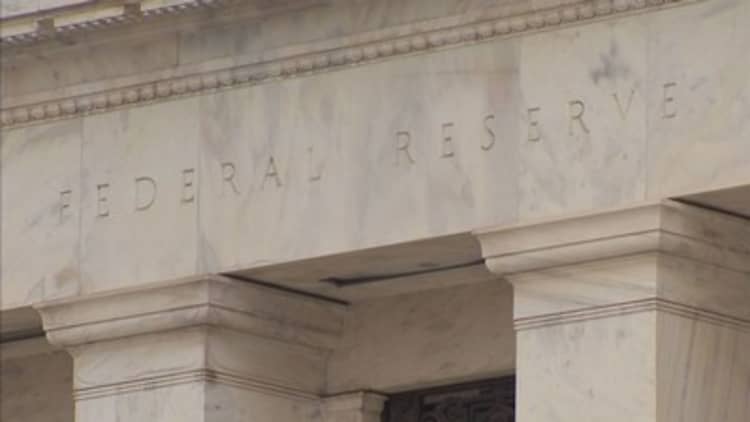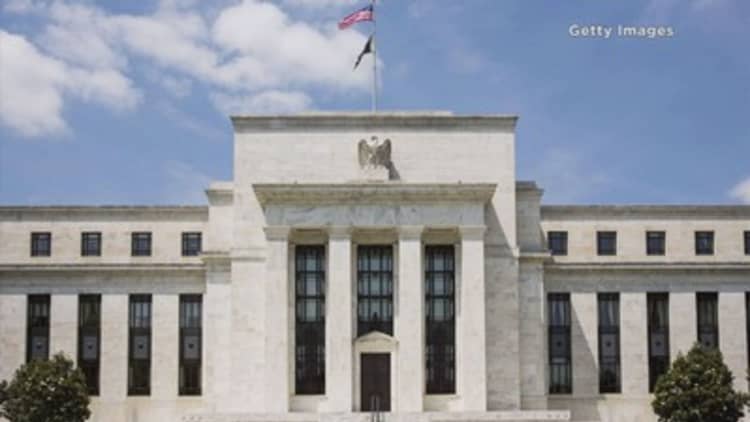
Consider the Federal Reserve the Starship Enterprise of monetary policy: It went where no central bank had gone before, and now must plot the journey home.
The Fed already has begun one leg of the trip, as it has started raising interest rates from financial crisis-era lows. Now, it is preparing to embark on what could be the more perilous part — unwinding the $4.5 trillion of bonds it holds on its so-called balance sheet.
Central bank officials discussed in March how to address the balance sheet, according to minutes of the Federal Open Market Committee released Wednesday. While it may just sound like arcane monetary talk, the stakes are high both for investors and consumers.
Get it right, and the Fed will have pulled off what its critics thought impossible, namely embarking on unprecedented intervention in the markets with little consequence. Get it wrong and the fallout could be dramatic, including a sharp rise in interest rates and tumult in the stock and bond markets.
How it works
The Fed's balance sheet in total now runs $4.52 trillion, composed primarily of various bonds. Of the total, $3.7 trillion came during three rounds of buying that began in response to the Great Recession of 2007-09. The program, known as "quantitative easing" or, more colloquially, "money printing," was aimed at injecting money into the economy and encouraging risk-taking following the devastation of the financial crisis.
The Fed bought Treasurys, now totaling $2.46 trillion, and mortgage-backed securities — loans packaged together as bonds now valued at $1.77 trillion — and they will be the focus of the balance sheet operation.
Those bonds carry various maturity dates. When the bonds reach maturity, current policy entails reinvesting the proceeds and rolling over the bonds. That helps keep demand in the market for government bonds and holds rates low.
When deciding how to unload the balance sheet, the Fed has two choices: It can simply allow the bonds to run off naturally, or it can actively sell them back into the market before maturity. Given the choice, Fed officials very much prefer the former option of not reinvesting the proceeds; the latter could create a supply glut and jack up rates.
There's another question: timing. Will the Fed choose to gradually stop reinvesting — "tapering," in Fed parlance — or stop all at once? The meeting minutes show considerable disagreement over how officials believe the process should occur.
And finally, FOMC officials will have to decide whether it will stop reinvesting both its mortgage and Treasury holdings. The likelihood is that the greater focus will be on mortgages, but that, too, likely will be the subject of much debate ahead.
What could go wrong
Both the stock and bond markets have come to depend on the Fed's programs — both the low interest rates and the balance sheet expansion — in the post-crisis years. Stocks, as measured by the , have surged more than 250 percent since the recession lows, while interest rates have remained low across the spectrum.
Any fiddling with a $4.5 trillion batch of bonds, then, could have major consequences if it's not done the right way.
Fed critics have worried for years that the central bank's reluctance to unwind crisis-era policies long after the crisis passed poses substantial dangers. The day is coming, then, when that will be put to the test.
"I have a bridge to sell you if you think a rate hike cycle combined with a shrinking balance sheet will go smoothly," said Peter Boockvar, chief market analyst at The Lindsey Group. "If the exit process ends up turning messy — defined as a recession and bear market in stocks — was all this easing worth it? Be bullish if you think both news stories will turn out just fine. Be very worried if they don't."
It's all in the timing
There are a few reasons why the balance sheet discussion reflected in the minutes was such a big deal. The FOMC's statement after the March meeting made no mention that the issue was discussed in such detail, and Chair Janet Yellen had little to say about it in her news conference afterward as well.
The market is left, then, to parse out how soon it must worry about balance sheet reduction.
The minutes pointed to a move later this year. That jibes with a projection from Bank of America Merrill Lynch that balance sheet reduction will start when the Fed's benchmark target rate is around 1.25 percent to 1.5 percent — or two rate hikes from now, which is the baseline projection for 2017 both from central bank officials and market participants.
From there, BofAML thinks the Fed will taper its reinvestments over a one-year period and continue down a passive path.
"The Fed has stated its intention to reduce its securities holdings by simply not rolling over its maturing proceeds," BofAML rates strategist Mark Cabana said in a note. "The Fed will likely not engage in asset sales as a core part of the reduction process."
However, there's one other question: Will the Fed keep raising rates at the same time, or will it use the balance sheet reduction as the equivalent of several hikes? Cabana believes the rate hikes will continue, though New York Fed President William Dudley has said he believes the Fed could pause as it runs off the balance sheet.
What else is at stake?
Either way the Fed works things, the process of shedding trillions of dollars in bonds will take a long time.
Greg McBride, chief financial analyst at Bankrate.com, sees the process lasting 15 or 20 years, with plenty of rests in between as the Fed goes back to asset purchases during economic downturns.
"When you look at the context of a slow-growth economy, productivity growth that is abysmally low — that all adds up to a Fed that's not going to be able to be aggressive with interest rates or downsizing the balance sheet," McBride said in an interview.
"Seeing slow progress on both of these fronts just brings us to the intersection of an inevitable economic slowdown at some point long before interest rates get to more normal levels and the balance sheet is reduced significantly in size," he added.
However, there's a rather significant intangible in play.
Yellen may be winding down her career, with many Fed watchers figuring that President Donald Trump will not reappoint her when her term expires early next year. That means the chair may focus at least in part on legacy building in the coming months.
"Unless renominated, Chair Yellen will leave her seat in February 2018 having defined her legacy as the first central bank leader to have successfully lifted off of the zero lower-bound and to have begun the process of post-financial crisis normalization," economists at Morgan Stanley said in a note. "If all goes well, it will be a gift to her successor."
Watch: How big is the Fed's balance sheet?



